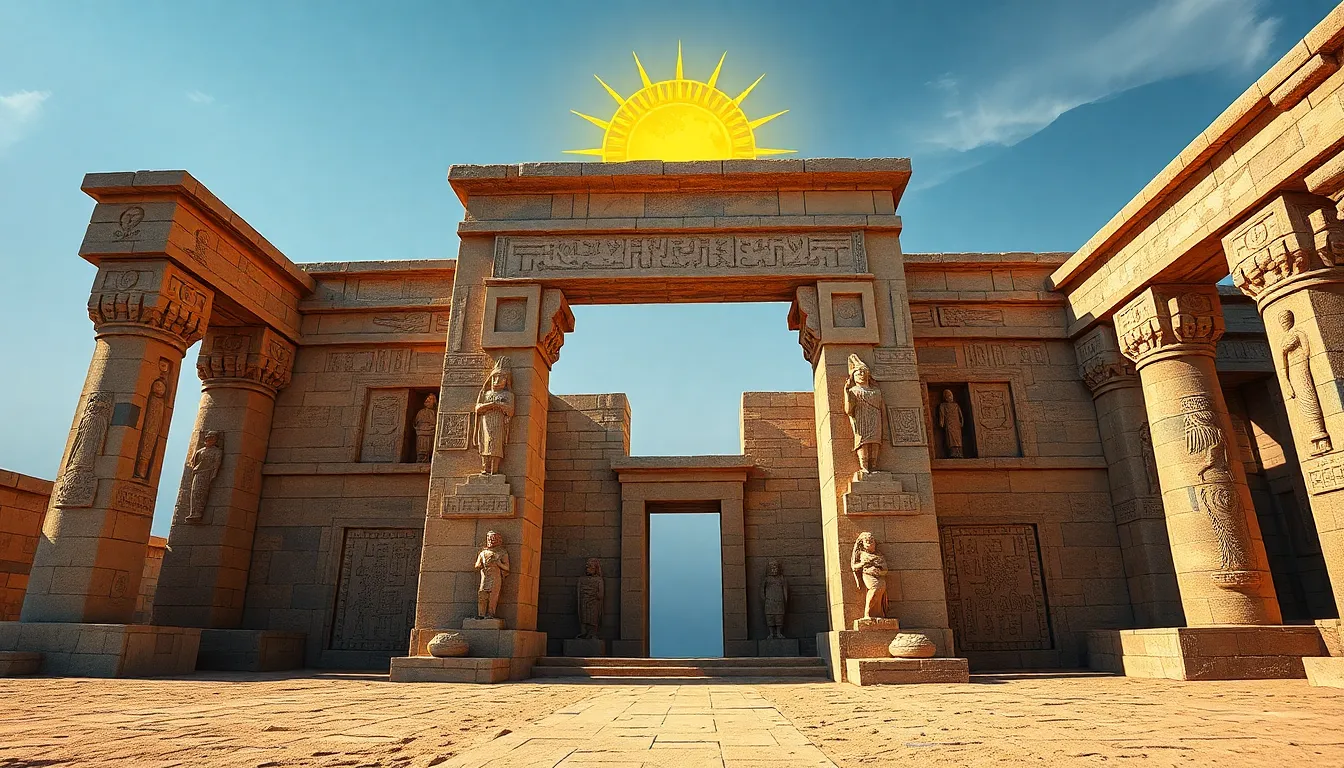The Influence of Solar Myths on Egyptian Architecture
I. Introduction
Ancient Egyptian civilization is renowned for its monumental architecture, which stands as a testament to the ingenuity and creativity of its people. From the majestic pyramids to the elaborate temples, the architectural achievements of this civilization reflect a deep understanding of both structure and symbolism. Central to this symbolism is the significance of solar myths, which played a pivotal role in shaping religious beliefs and artistic expressions in ancient Egypt.
This article aims to explore the profound influence of solar myths on Egyptian architecture. We will delve into the religious context, examine specific architectural elements inspired by these myths, highlight notable examples of solar-inspired structures, and discuss the legacy of these themes in contemporary architecture. By analyzing these aspects, we can gain a deeper understanding of how mythology and architecture intersected in ancient Egypt.
II. The Role of the Sun in Egyptian Religion
The sun held a central place in the religious beliefs of ancient Egyptians. The sun god Ra was one of the most important deities, revered as the creator and sustainer of life. He was often depicted as a falcon-headed man, crowned with a sun disk, and was believed to travel across the sky in his solar boat, bringing light and warmth to the world.
In addition to Ra, other solar deities such as Horus and Aten played significant roles in the pantheon of Egyptian gods. The worship of these deities was closely tied to the natural cycles of day and night, and the changing seasons, which were essential for agriculture and survival.
The connection between solar worship and architectural design is evident in the way temples and monuments were constructed. These structures were often designed to align with solar events, emphasizing the importance of the sun in the spiritual and cultural life of ancient Egyptians.
III. Architectural Elements Inspired by Solar Myths
Several architectural features in ancient Egypt were directly inspired by solar myths. These elements include:
- Use of Light and Shadow: Temples were often designed to maximize the effects of sunlight, with strategic openings that allowed light to illuminate specific areas during certain times of the day.
- Obelisks: These towering stone pillars were often erected in pairs at the entrances of temples. They symbolized the rays of the sun and were associated with the sun god Ra.
- Orientation of Structures: Many temples and pyramids were oriented towards the east, allowing the first rays of the sun to illuminate their sanctuaries during solstices and equinoxes.
IV. Notable Examples of Solar-Inspired Architecture
Several iconic structures exemplify the influence of solar myths in Egyptian architecture:
- The Great Pyramids of Giza: The pyramids are not only architectural marvels but also meticulously aligned with celestial bodies. Their orientation is believed to reflect the Egyptians’ understanding of the cosmos and their reverence for the sun.
- The Temple of Karnak: This vast complex features solar sanctuaries dedicated to Amun-Ra. The layout and design of the temple reflect the importance of solar worship in the religious practices of ancient Egyptians.
- The Sun Temple of Abu Gurab: This temple is dedicated to Ra and features unique architectural elements that highlight the sun’s significance, including a large altar that captures sunlight.
V. Influence of Solar Myths on Urban Planning
Solar myths also had a considerable impact on the urban planning of ancient Egyptian cities. Key aspects include:
- Layout of Cities: Cities were often designed with religious and astronomical considerations in mind, with major temples located in positions that emphasized their connection to the sun.
- Integration of Religious and Astronomical Elements: The alignment of streets and buildings with solar events demonstrated the importance of celestial bodies in everyday life.
- Comparison to Other Civilizations: While other ancient civilizations also incorporated celestial aspects into their urban planning, the Egyptians had a unique focus on the sun, reflecting their distinct religious beliefs.
VI. The Evolution of Solar Themes in Later Egyptian Architecture
As dynasties progressed, there were notable changes in architectural styles, yet the influence of solar mythology remained evident:
- Changes in Architectural Styles: Different periods saw the adoption of new materials and techniques, but solar themes were often preserved in the designs of temples and monuments.
- Continuing Influence: Even as styles evolved, the symbolism of the sun persisted in later structures, maintaining a connection to earlier traditions.
- Modern Interpretations: Contemporary architects often draw inspiration from ancient solar themes, reflecting a lasting legacy in modern design.
VII. The Legacy of Solar Myths in Contemporary Architecture
The influence of solar myths is not confined to ancient Egypt; it has extended into contemporary architectural practices:
- Modern Architectural Practices: Many architects today incorporate principles of light and solar orientation into their designs, drawing inspiration from ancient Egyptian methods.
- Contemporary Buildings: Structures such as museums and cultural centers often feature elements that pay homage to ancient solar themes, showcasing the enduring legacy of this symbolism.
- Sustainable Architecture: The focus on solar energy in modern architecture reflects a renewed interest in the sun’s importance, mirroring ancient reverence for this celestial body.
VIII. Conclusion
In conclusion, the influence of solar myths on Egyptian architecture is profound and multifaceted. From the religious significance of the sun god Ra to the architectural elements that symbolize solar worship, the legacy of these beliefs is evident in the monumental structures of ancient Egypt. The intersection of mythology and architecture not only shaped the physical landscape of ancient Egyptian civilization but also continues to inspire contemporary architectural practices. As we reflect on the enduring impact of these beliefs, we recognize the timeless connection between humanity’s reverence for the sun and the art of building.




